
Livin’ the Dream
A couple weeks ago, I finished the second draft of the third episode (or volume) of the epic-length novel I’ve been writing for seven years. I’m now headed into the homestretch with this draft, since the next episode will be the last one in the series.
What this means is, I hope to be finished with the second draft of the entire million-plus-word series by this time next year. After that, it’s “simply” a matter of letting the book lie fallow for a few months, then going back and reading it with fresh eyes and revising it for the third (and hopefully final) draft.
I began work on the second draft last winter, and although I haven’t finished the second draft of the whole series yet, I have managed to revise (or write anew) 708,000 words. (That’s longer than three copies of Moby Dick; that’s longer even than War and Peace.) Doing this, however, has been an unbelievable amount of work, requiring at least 10-hour work days for six days a week, and has left me mentally, physically, and emotionally spent.
And while deep in the Sisyphean midst of this overwhelming mountain of work, macabrely my thoughts have turned to a comment I’ve heard many times—a comment that forms the title of this blog entry.
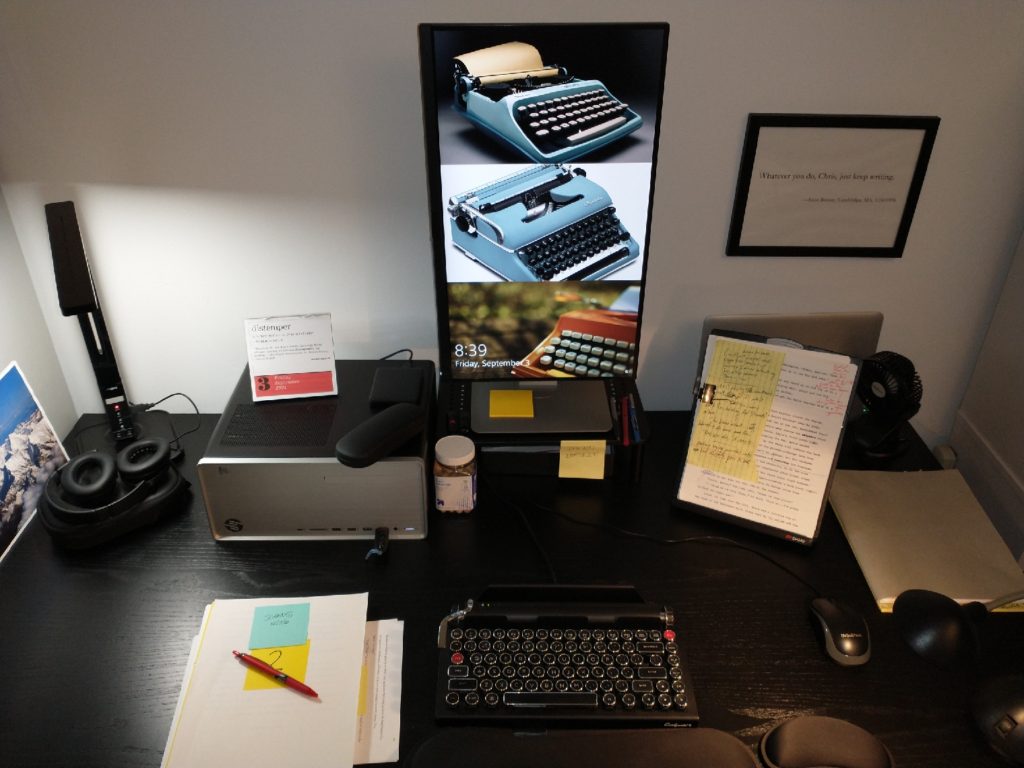
While I’ve been writing professionally for 30 years (in 1992, I got my first writing job straight out of college as a reporter for this now-defunct newspaper), this year marks the 20th year that I’ve been writing fiction full-time. Two decades of waking up every day and writing stories, creating characters and worlds.
Over the course of the past 20 years, upon learning what I do, many people have commented to me, “Man…you’re livin’ the dream!” The most memorable time, the comment was made by a staff writer for the HBO series Hung. We both had entries in a play festival and were explaining our backgrounds to each other. Very quickly I figured out that this guy was overworked, unfulfilled and stressed-out from having to crank out episodes of a TV show. Then, when I told him that I wrote exclusively my own fiction and (at the time) did speechwriting work occasionally to supplement my income, his face lightened and he appeared to be visualizing “the dream” for himself. When he came back to reality, there was a little envious twitch in his brow, and then he said, “Man, that’s great. Good for you. I’m glad one of us is livin’ the dream.”
You know what? I really am living the dream—but it’s my dream. I’ve known since I was 13 years old that this was what I wanted to do with my life—write fiction, be a novelist—and I get to do this work every day, and I’m profoundly grateful for it. But when non-writers (or unfulfilled screenwriters, journalists, content writers, ad men, etc.) have made that comment, they’ve typically focused only on the pleasant aspects of my work and they either haven’t understood, or they’ve downplayed, the negatives—chiefly, how much time and labor the work requires.
What they don’t see or don’t visualize as a part of “the dream” are the endless 12-hour days required to finish a novel. They also don’t see the fact that novel-writing is an absolute time-sink (the other day, I glanced at the clock and it was noon; I wrote three paragraphs, looked up at the clock and it was three o’clock; goodbye to another gorgeous Saturday afternoon).
Because novel-writing is a solitary activity where the writer spends a good 80% of his time alone, he doesn’t have a lot of people (if anybody) with whom he can share his work or simply make a connection. And in order to create living, breathing characters, the novelist must live not only his own personal emotional life with all its ups and downs, but also the emotional lives of all of his characters, and he also must put everything that is in him into the work. In my case, on a daily basis I’m besieged by doubts and guilt and an overwhelming sense of emotional angst (or tinnitus), usually not about things that I, Chris Orcutt, have contemplated or done, but because of things that my characters have contemplated, done, and possibly felt guilty about.
This can lead to times when my emotional reserves (or “the well”) are absolutely depleted—something that has happened to me at least ten times over the past 20 years, and it happened to me again recently, during lunch with my best friend.
Seeing that I was distraught (I was considering drinking for the first time in 3½ years), he kindly suggested a dozen things he could do to help me. I truly appreciated his kindness, but I knew what I needed.
I needed a break. I needed a vacation. I needed to roam and explore and get the hell away from my cast of 20+ self-absorbed teenage characters. I needed to refill the well.
So that’s exactly what I did.
I’ve discovered that, for me, these breakdowns occur when there’s an imbalance between output and input. I have an emotional breakdown when I’ve had nothing but output for a long time, and my well of images, feelings, and inspiration has drained down to dregs. When this happens, I have to get input back into the system: I have to see new and different people and places, stop writing for output for a while (instead just take casual, random notes, a form of input), and simply enjoy myself. In short, I have to go have adventures.
I’ve written extensively elsewhere about some of my past modest adventures: in Paris and Normandy, on a two-week driving tour of Great Britain, in the wilds of Montana, etc. This time around, my well-refilling adventure was much more spontaneous, and broken into three parts: a week on Florida beaches and at Disney’s Animal Kingdom, a week’s “staycation” of seeing friends and going to movies, and a few days in my new wilderness getaway location—Adirondack Park.

I love to swim, so my wife booked us into a resort hotel in Fort Lauderdale, and I did nothing but work out, run on the beach, and swim in the ocean and the amazing resort pool. Something about the pleasant monotony of the ocean waves clears my head, and after an angry and disturbed 24 hours of not knowing what to do with myself, I became “vacation Chris”—a guy who makes friends with the locals and fellow vacationers. I conversed in Spanish with the pool maintenance guy, Jorge, before the sun had come up. I perfected making egg white vegetable omelets in our hotel room kitchenette. I threw a football around in the surf with a group of Austrian exchange students and explained the rules of American football. I read a couple pages (and only a couple) of a nonfiction book I’ve been savoring: Max Perkins, Editor of Genius. In no time—perhaps because the well had already begun to refill—random ideas for my novel-in-progress started coming to me, and I wrote them in a “007” Moleskine notebook I’d brought. And I also got a pretty sweet tan.

After a drive across the state through the Everglades (disappointing; we didn’t see a single alligator), my wife and I went to famed Clearwater Beach on the Gulf Coast. There, I played bocce with a group of 20-something American guys and swam a lot.
Then, the next day, we went to Disney’s Animal Kingdom, and I wore my safari jacket and a new hat I’d picked up in Florida. Consequently, my safari outfit was better than that worn by the park employees, and I was asked for directions (and complimented by staff about my outfit) at least a dozen times during the day. For the course of the day, in my mind I pretended to be a young version of a character I created in my story “The Last Great White Hunter”—Buck Remington. “What kind of a man was he? More than a man’s man, that’s for sure. He was a man’s man’s man.”
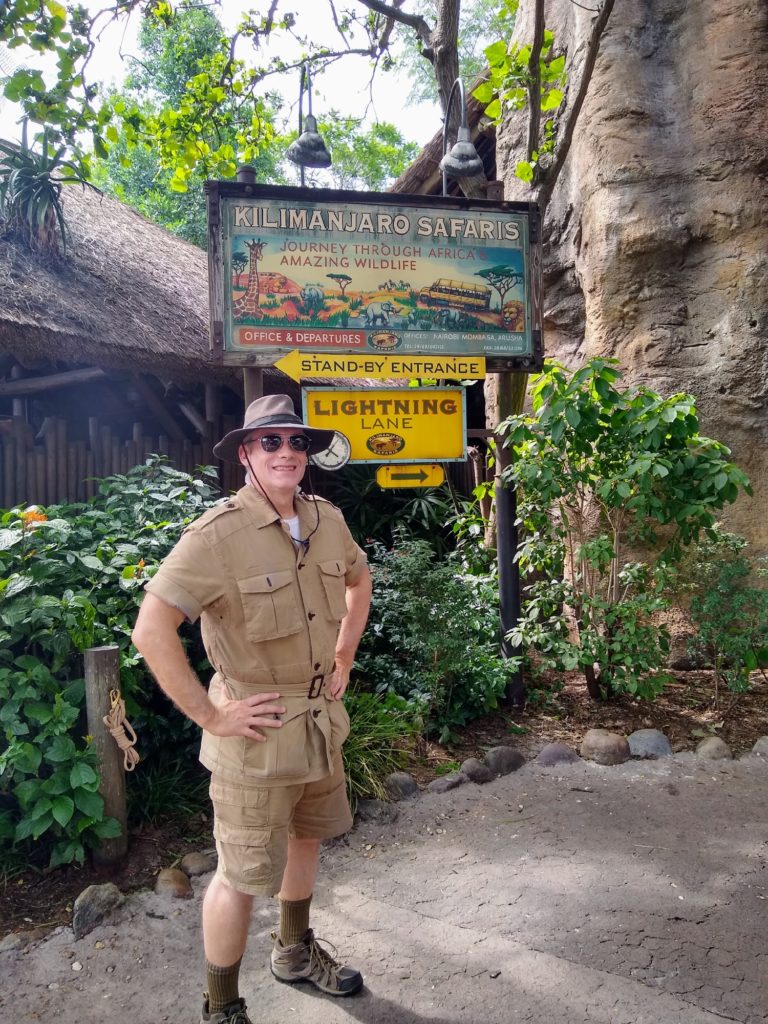
As a guy who never got to experience any of the Disney parks as a kid, I was thoroughly blown away by my visit—most notably how the park operated like a Swiss watch: with total precision. I had gone into the experience girding my loins, expecting to have to wait for hours for certain rides and attractions, but I discovered that the rides are designed so that standing in line is part of the experience, and so the half-hour that we had to wait was never a hardship.
When I was waiting in line for my second ride on the Mt. Everest “thrill ride,” I perused photos on the wall of a 1982 expedition to Forbidden Mountain in the Himalayas to seek out the Yeti. Now, as someone who has read a couple dozen books about Bigfoot and the Yeti (or Abominable Snowman), I was intrigued; I’d never heard of this 1982 expedition, and some of the photos recovered from an expedition camera seemed to show a Yeti. As the line to get on the ride moved forward, I had to stop reading the display, but later on looked it up and learned it was 100% fictitious—created entirely by the Disney imagineers. Wow. These men and women are good.
I loved everything about Animal Kingdom, and when we got back from this vacation, I immediately bought 50 more shares of Disney stock. While there, I realized something: Nobody does it like Disney, and whatever they do in the future, I want to make sure I have a piece of it.
When we got home again, I took some more time off, getting together with friends, swimming, working out, and going to the movies.
Since I’m working on a novel that takes place in 1986-87, the original Top Gun makes an appearance in the novel, so ever since I found out about the sequel, I’ve been looking forward to the movie. Honestly, though, I thought the producers would screw it up, making some watered-down, politically correct movie, but they didn’t. Clearly, they used the original movie as a template, creating one of the best movies I’ve seen in years.
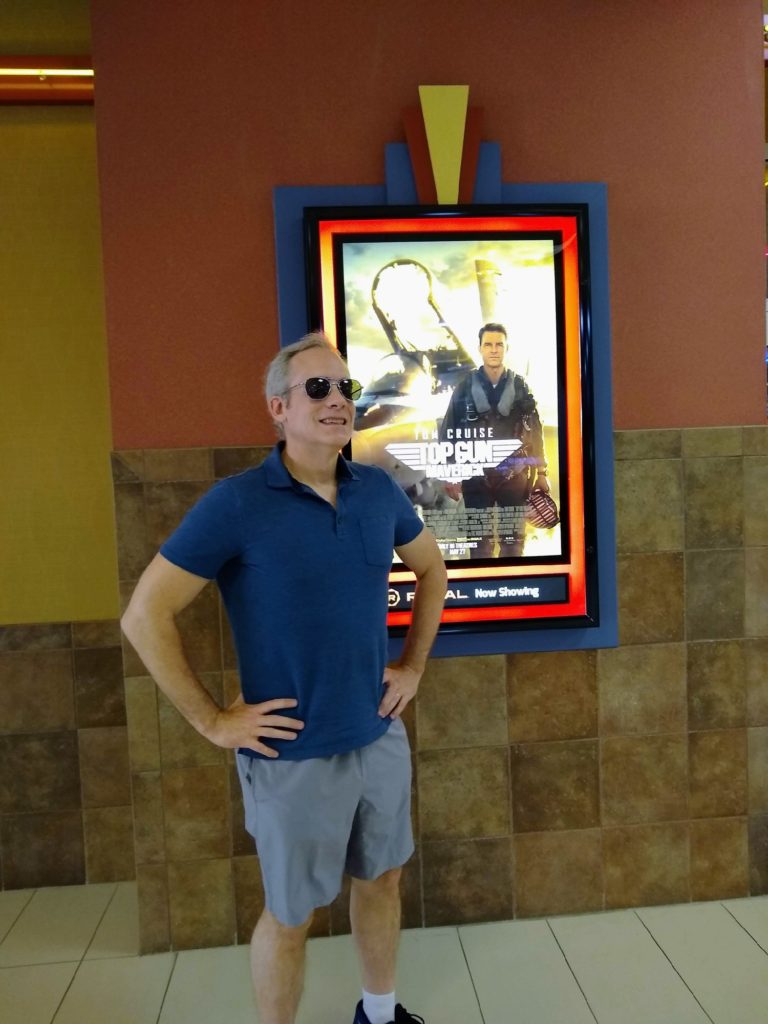
What most pleased me about Top Gun: Maverick was that, unlike superhero movies made today, it wasn’t made for the new generation; it was made for my generation—those of us who saw the original movie in the theater half a dozen times during the summer of ’86. The makers of Maverick used the same story structure, and simply augmented and refined the original movie “thrill ride” with modern special effects, a videogame component, and a character (a few years older than me) who is now at the end of his career. All I can say is, my first words to my wife (during the movie) were, “I want the Blu-Ray of this movie for Christmas.” (A week after seeing Maverick in the theater the first time, I went back and saw it a second time—it’s that good.)
My most recent adventure in refilling the well was even more spontaneous than the Florida trip. For months, I’d been casting about for ideas on where to go in order to refill the well, and then I realized that a few important scenes in my epic novel take place in the Adirondacks in New York State, and in Burlington on Lake Champlain in Vermont. Back in my teens and early 20s, I spent a lot of time up there with Boy Scouts and visiting a friend’s house on one of the lakes, but with the exception of visiting Lake Placid every couple of years for XC-skiing, I hadn’t really explored up there in nearly 30 years.
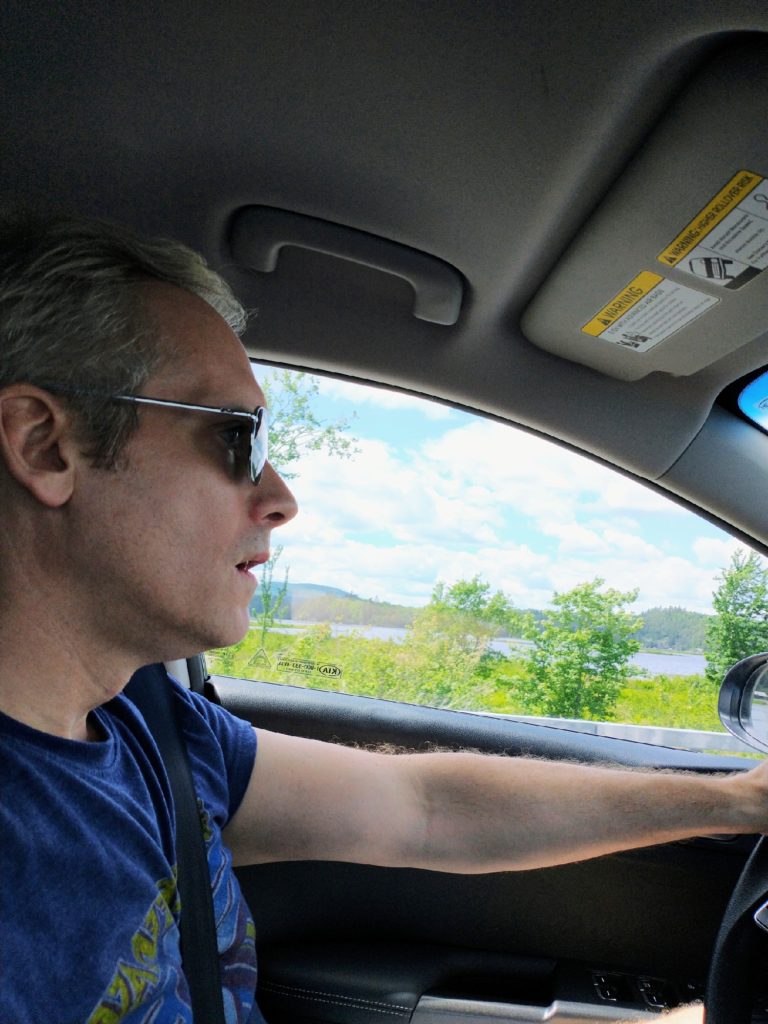
The author, dangerously taking a selfie at 64 mph (while rockin’ his Van Halen T-shirt). 
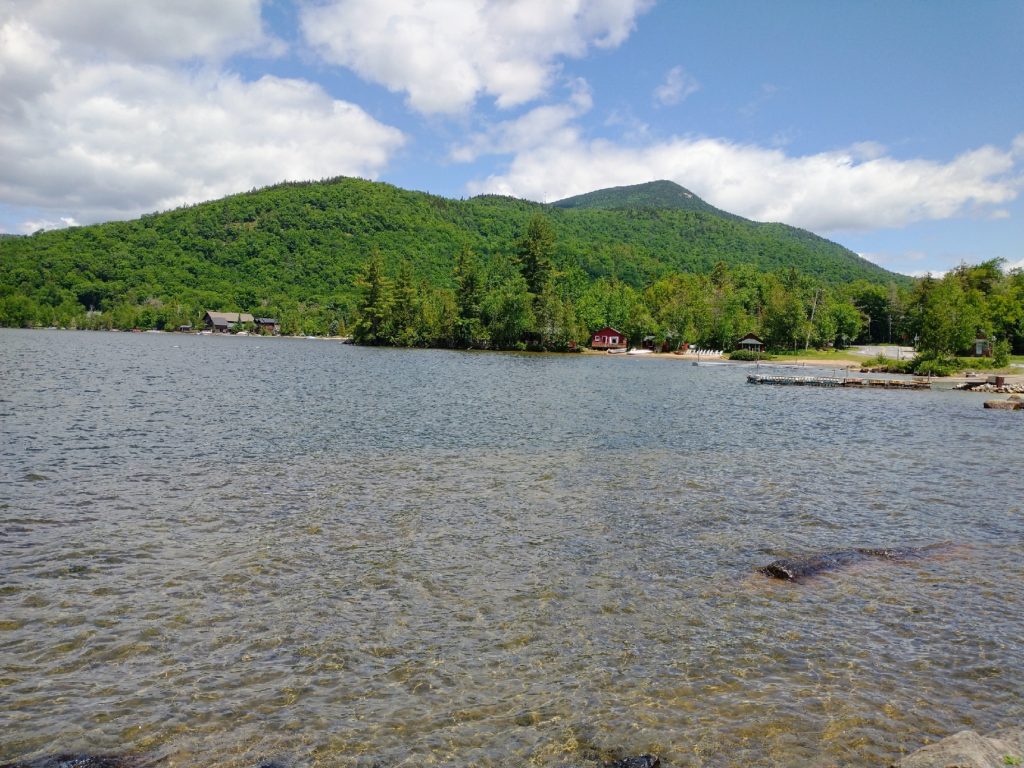


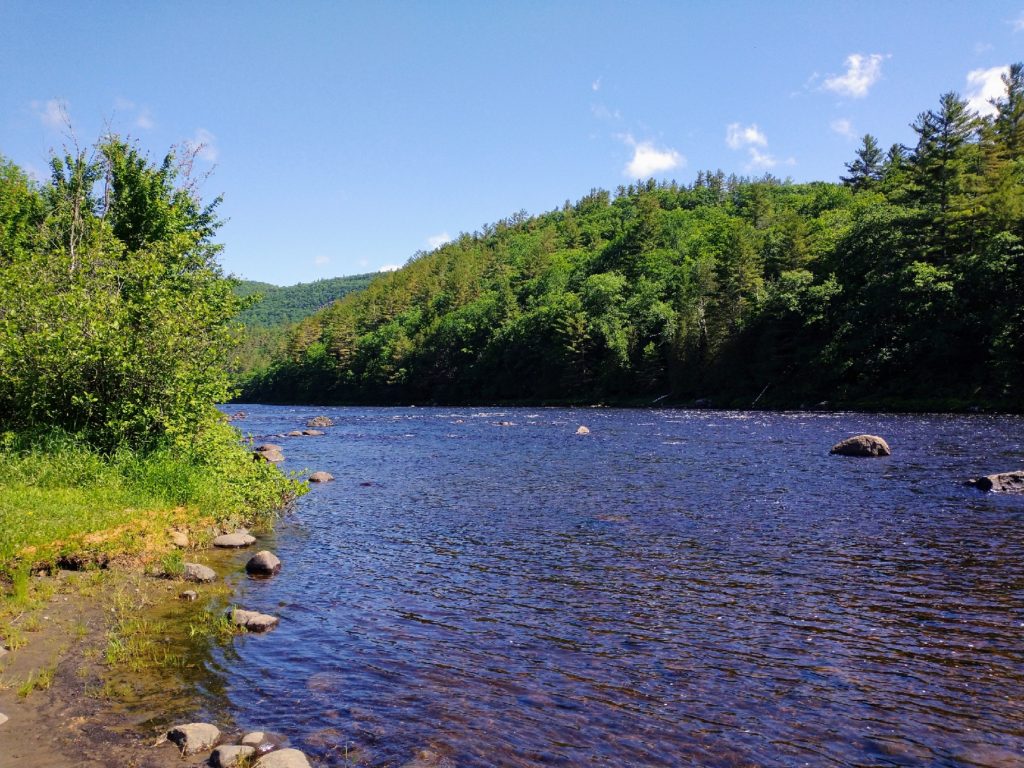
So, for four days I wended my way around Adirondack Park, visiting about a dozen lakes (hey, California: by the way, New York has all the water), hamlets surrounded by mountains, and locations that appear in the novel. I used the trip in part to relax, and in part to remind myself of several facts about these areas for the novel. Among the many things I was reminded of, following are a few truths I relearned:
1. The water in these lakes is extremely cold, even in mid-June. (In my late teens and early 20’s, I did a lot of waterskiing with a friend whose family had a house on one of the lakes up there, but I’d forgotten since then just how cold the waters are.)
2. The deer flies and blackflies are super-friendly up there, gathering excitedly around your car to greet you before you’ve even had a chance to park.
3. Adirondack Park is VAST—nothing but 6-million acres of mountains, lakes, rivers, bogs, ravines and true, dense, primordial wilderness. When seen in satellite view, the few roads and communities contained within the confines of the park look like gossamer-thin spider webs compared to the overwhelming green of the woods.
While up there, I swam in several lakes, visited a couple of the “great camps” (family “getaway” lodges once owned by prominent industrialists like Vanderbilt, Rockefeller and Durant), and in general simply began “dreamsketching” (my term) the outline for the last episode of the novel. The climax of the final episode and million-word series takes place in the Adirondacks, so I want it to be riveting and accurate.
Driving around an area puts me into something of a meditative trance, allowing “dreamsketching” of the novel to happen spontaneously. (I have engaged in this activity for every novel I’ve written—most notably during a two-week driving and hiking tour of Montana and Yellowstone National Park that formed the basis for the second half of my Dakota mystery The Rich Are Different.) In this case, I drove hundreds of miles through Adirondack Park while listening to music that conjures scenes from the novel, and as the music washed over me, and these amazing images of the wilderness up there washed over me (steep and towering mountainsides; deep, shadowy ravines; rushing rivers; deep blue lakes; and impenetrable, dense, dark woods), the scenes played out for me in my mind, and I would pull the car over occasionally and make notes in the “007” Moleskine notebook.
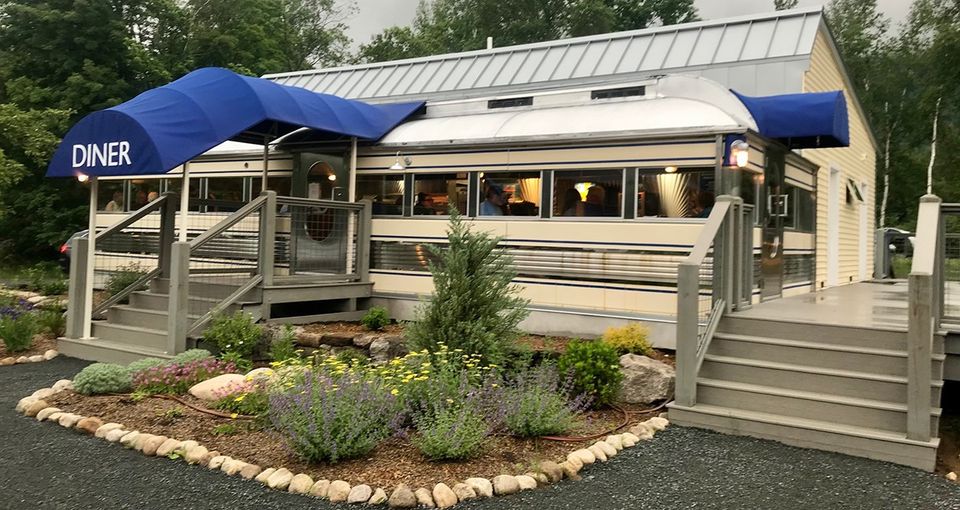
As a sidebar, I have to mention that I had the best breakfast of my life at a charming little diner in Blue Mountain Lake, NY: Chef Darryl’s Mountain Diner. This place is truly a culinary oasis in a vast and forbidding wilderness (Adirondack Park). Chef Darryl himself greeted me when I walked in, and he made my scrambled eggs exactly how I like them—“fluffy.” My breakfast there was SO good that I went back a few hours later and bought lunch to go. I also bought a Chef Darryl’s Mountain Diner “regular’s” mug and wrote my name on the bottom (“Chris Orcutt, Novelist”), so the next time I go back, I’ll only have to pay $1.00 for my coffee—with unlimited refills. Thanks, Darryl! The food there was so good, the next day when I wanted breakfast, even though the diner was 40-some-odd miles away, I seriously considered backtracking an hour for Darryl’s magnificent cooking.
I’m not going to write about finding the train depot in the Adirondacks where Theodore Roosevelt learned he had become president after William McKinley’s assassination; nor about my adventure hiking around Sagamore Lake and borrowing somebody’s canoe; nor about my fly fishing adventure on the west branch of the Ausable River; nor about my afternoon hanging out with the attractive male and female lifeguards on Lake Champlain (a group of teens and 20-somethings whom I dubbed Baywatch: Burlington North Beach); nor about my quest to find the location of a 1976 bigfoot sighting outside of Whitehall, NY. I’m sorry, but those are just for me.
Now, though, as I head into the homestretch with my behemoth epic novel, I’m determined to pace myself with this final episode. I realize that I need to take regular breaks to refill the well, so I don’t have the kind of breakdown I had this spring.
This August I will take a couple days to “do” Saratoga—hanging out with the trainers and handicappers by the fence rails watching the early-morning workouts, betting on the races during the day, and swimming and working out and playing billiards in the evenings. This fall I will take another trip to the Adirondacks, and said trip will include some more fly fishing. Early this winter (probably in December), I’m traveling alone to Lake Placid, NY and getting extensive lessons in skating style cross-country skiing from a professional at the Mount Van Hoevenberg Olympic training facility. And next March, Alexas and I will return to Florida for at least a week of sun and beaches, and to visit Disney’s Epcot or Hollywood.
Yup…I suppose that writer for Hung was right: I am livin’ the dream.
But now I realize that livin’ the dream encompasses more than the endless work of trying to create novels that will stand the test of time; livin’ the dream also means roaming and exploring and refilling the creative well—without having to answer to anybody along the way.
These breaks are an integral part of the dream, and from now on I’m going to make sure I take them.
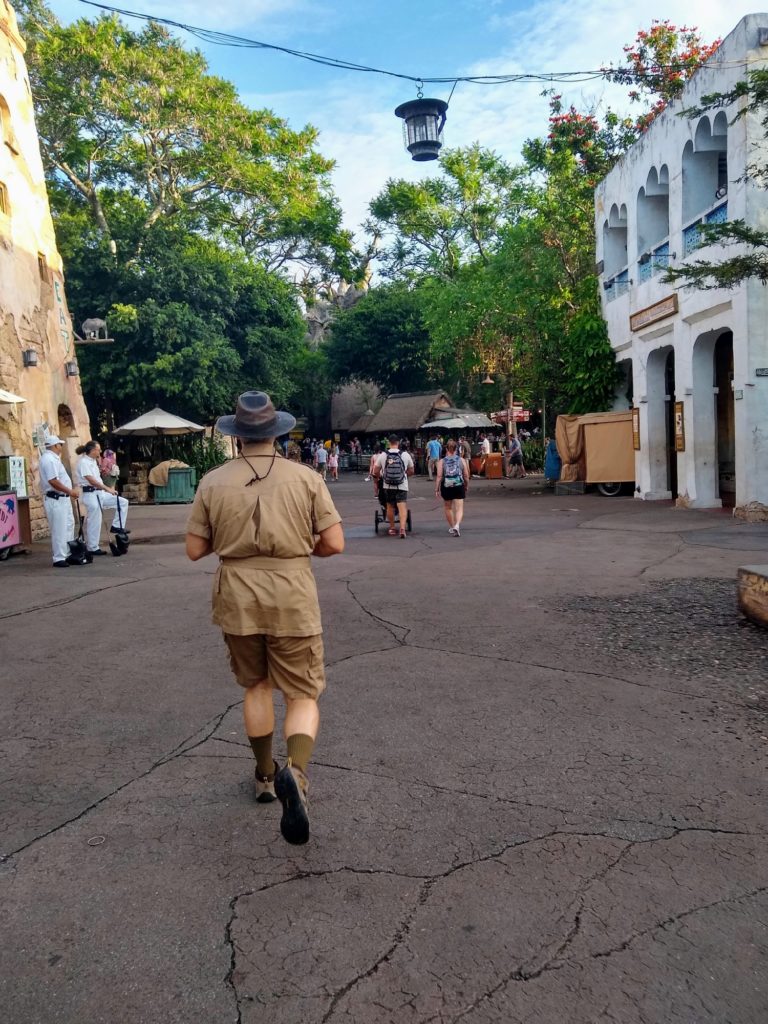
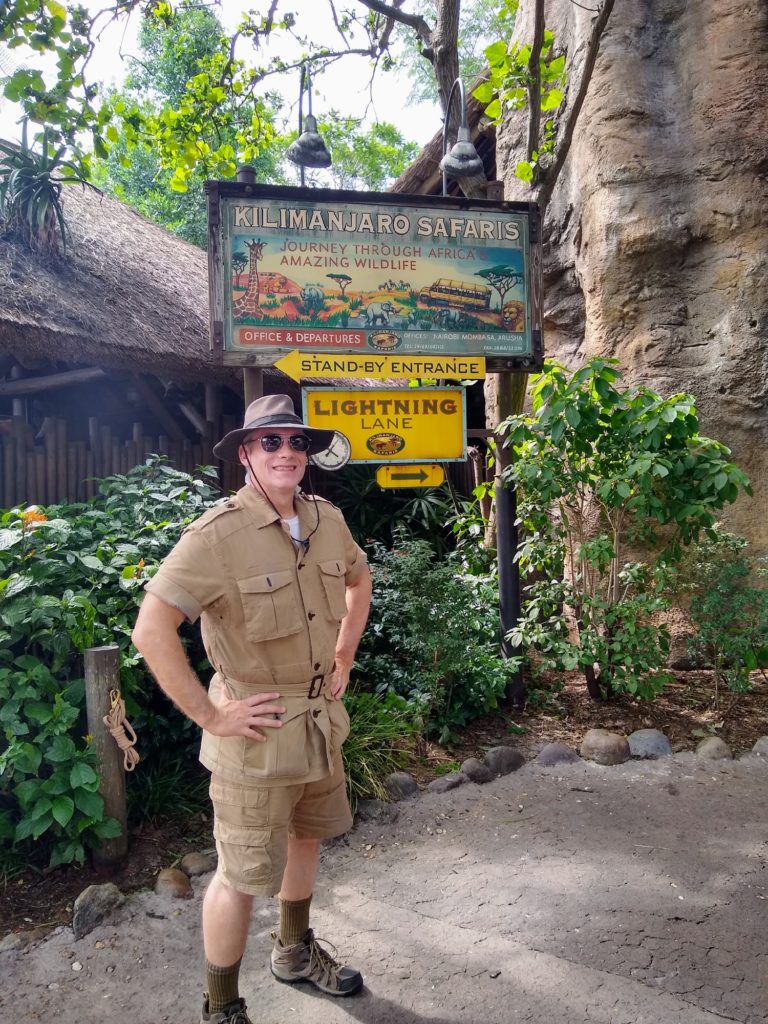
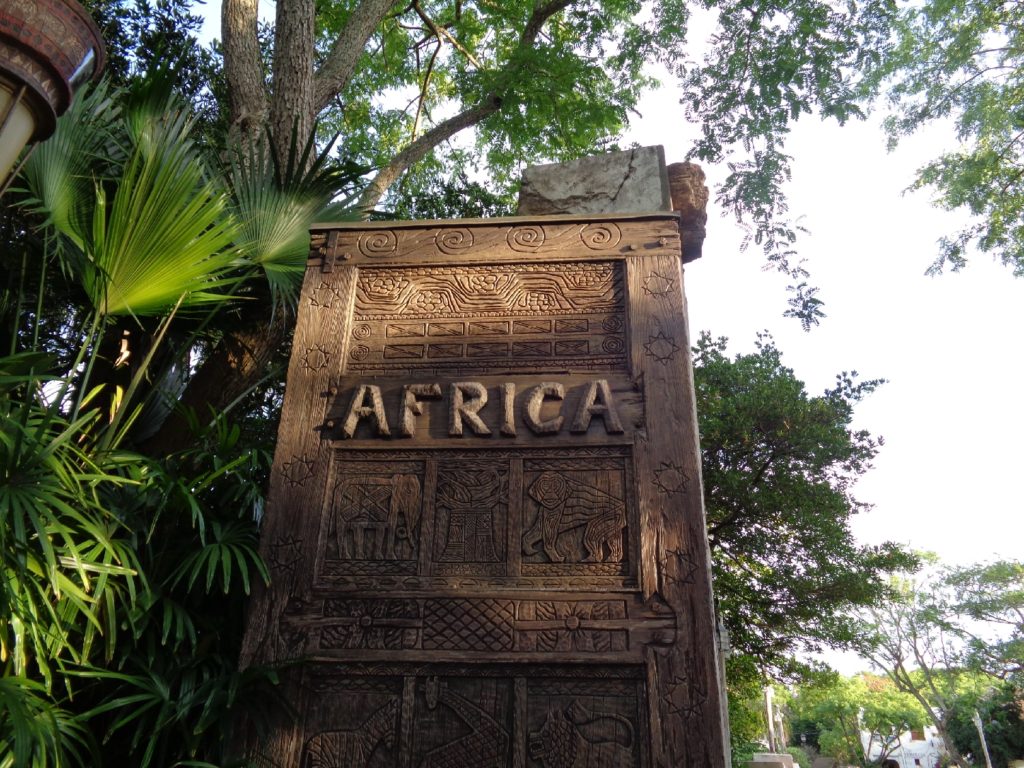




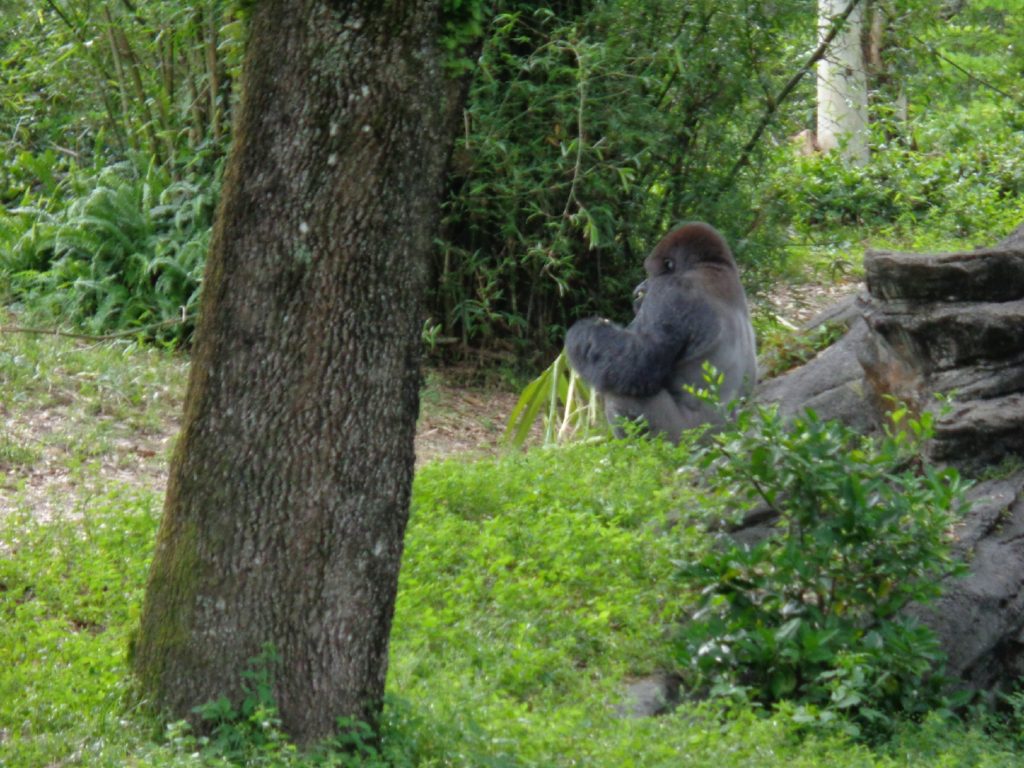
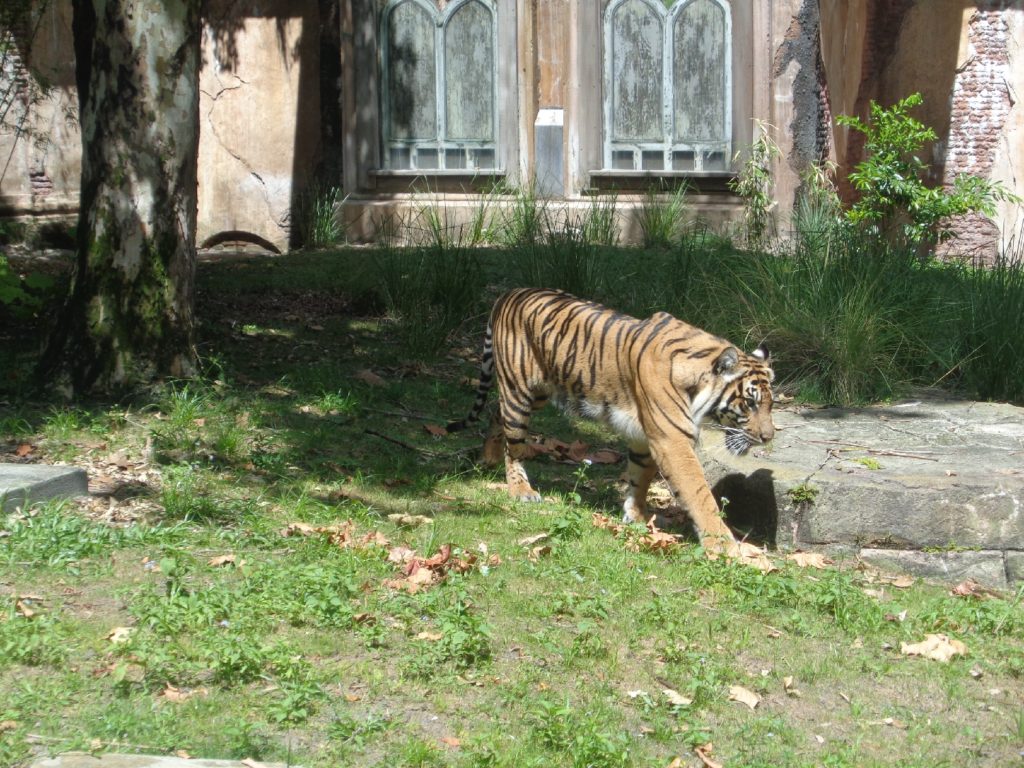
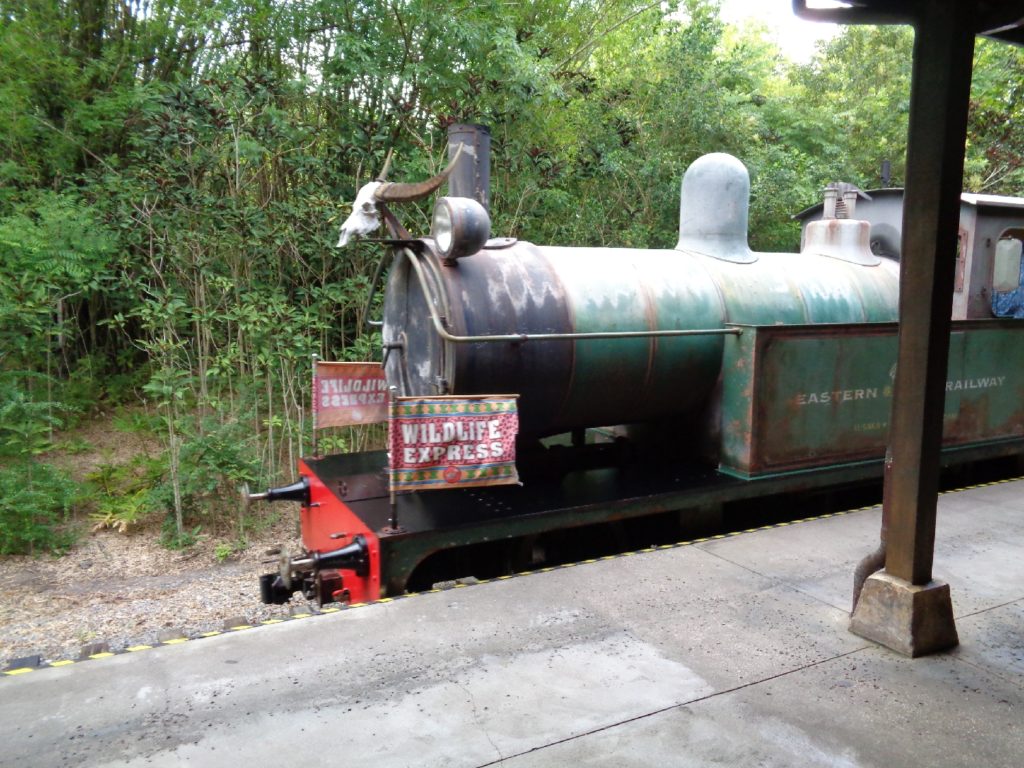



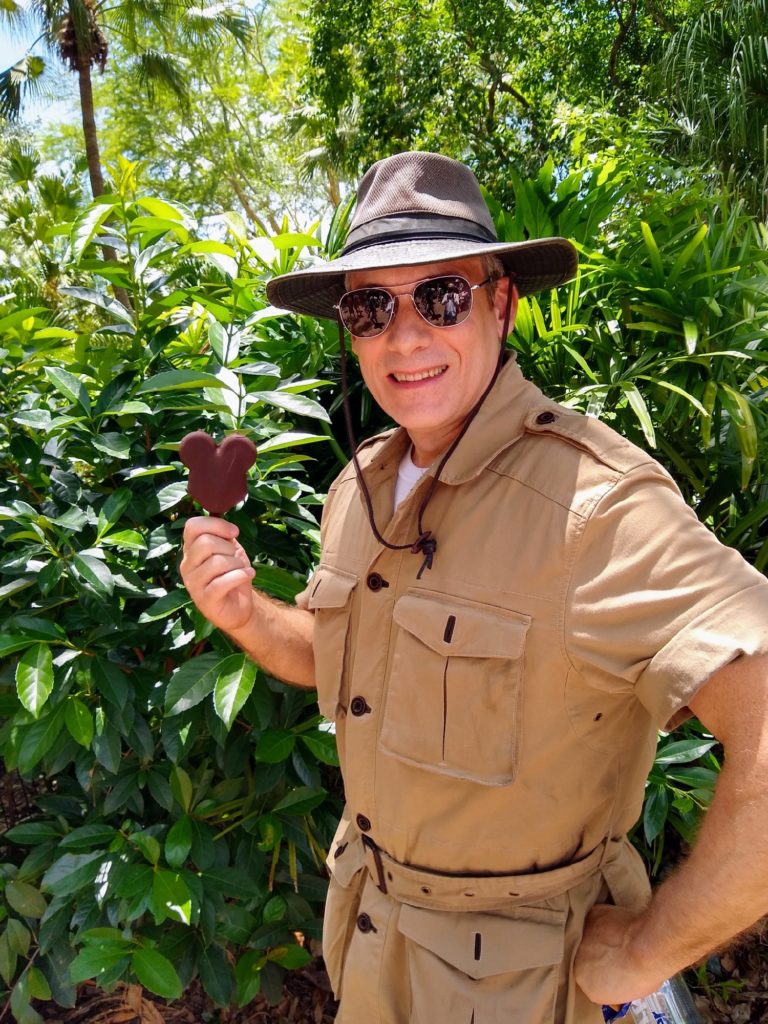
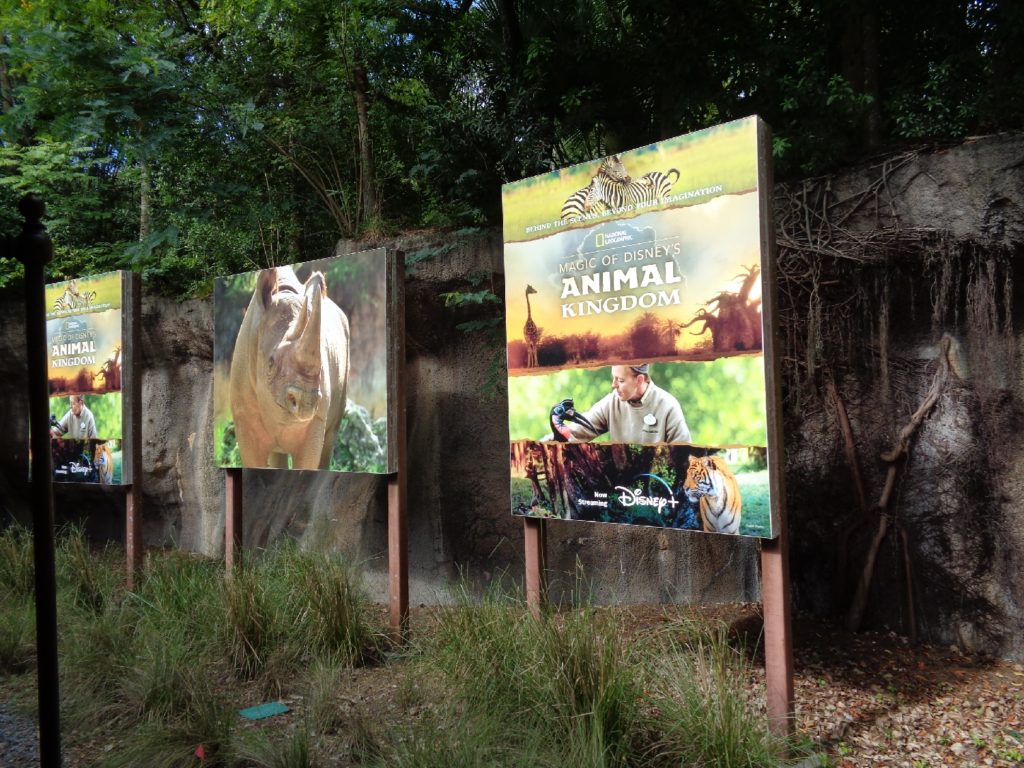

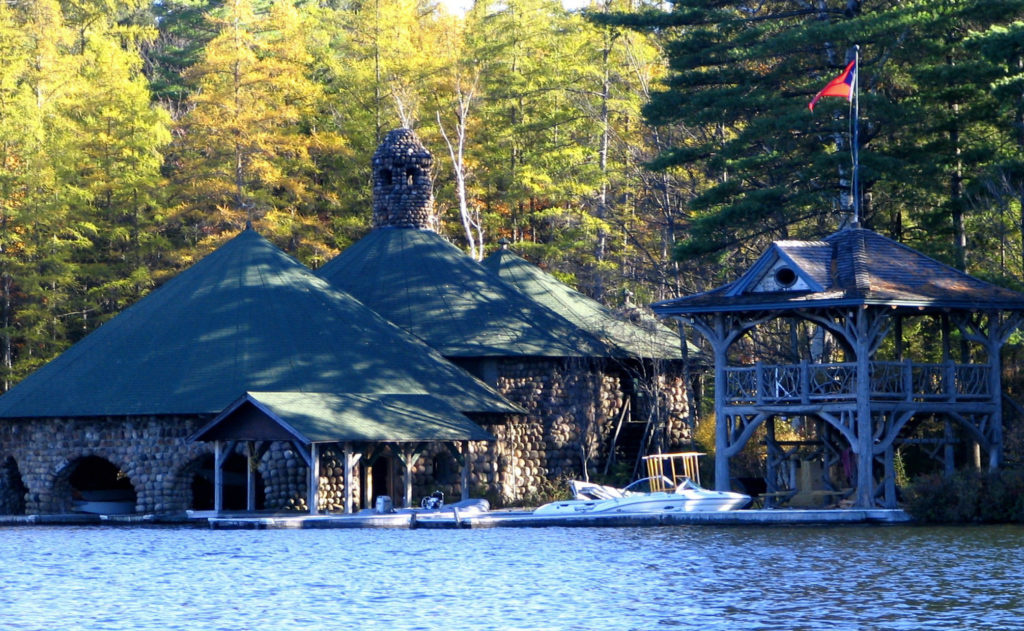
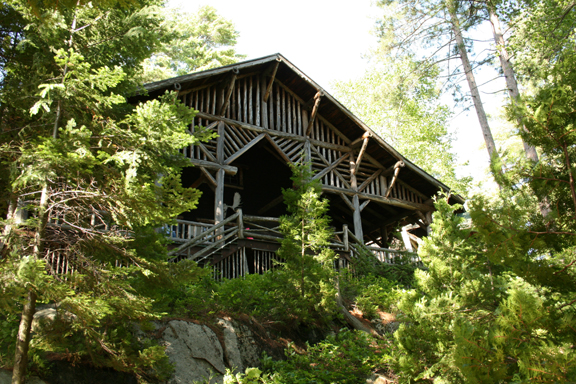
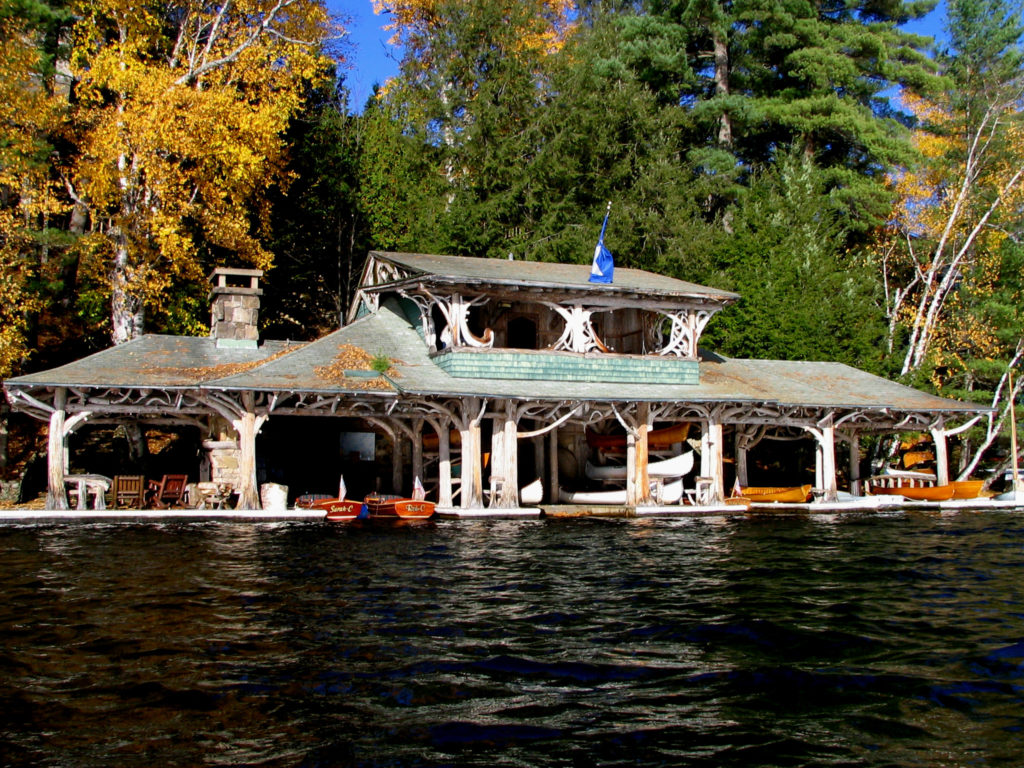

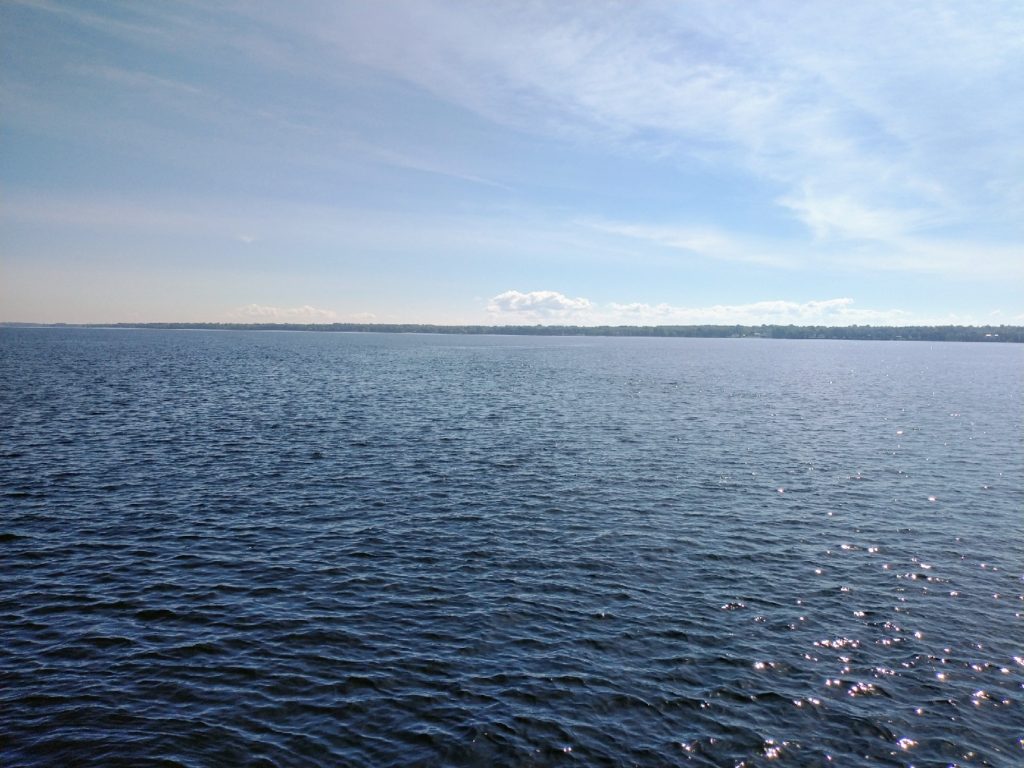
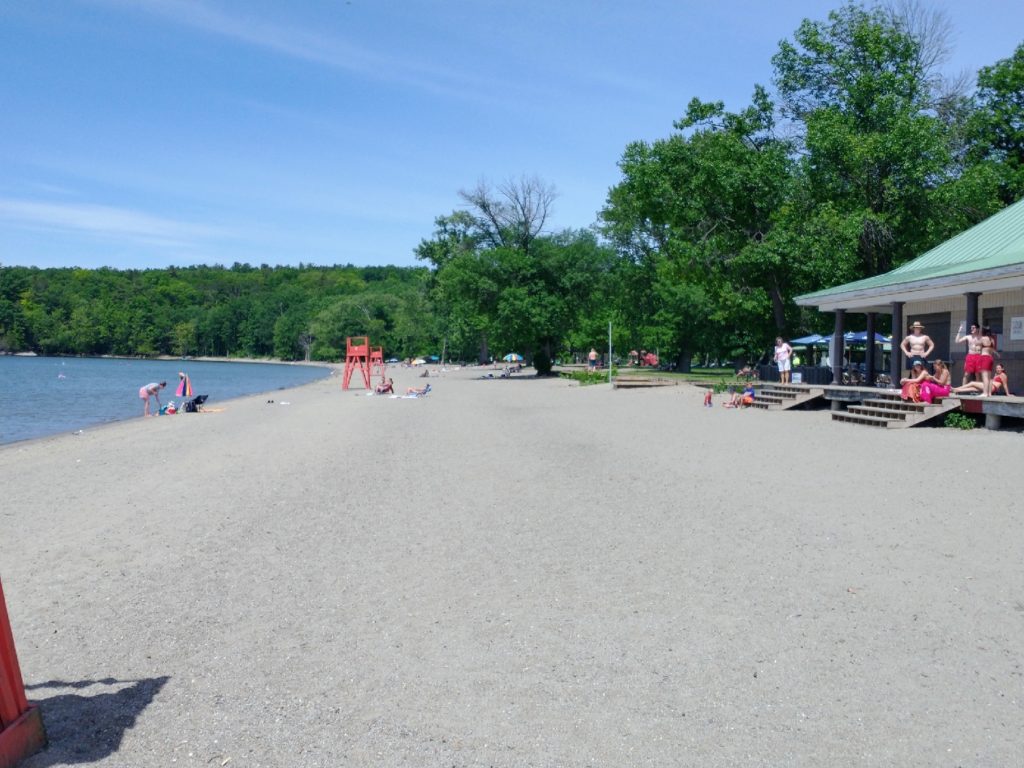
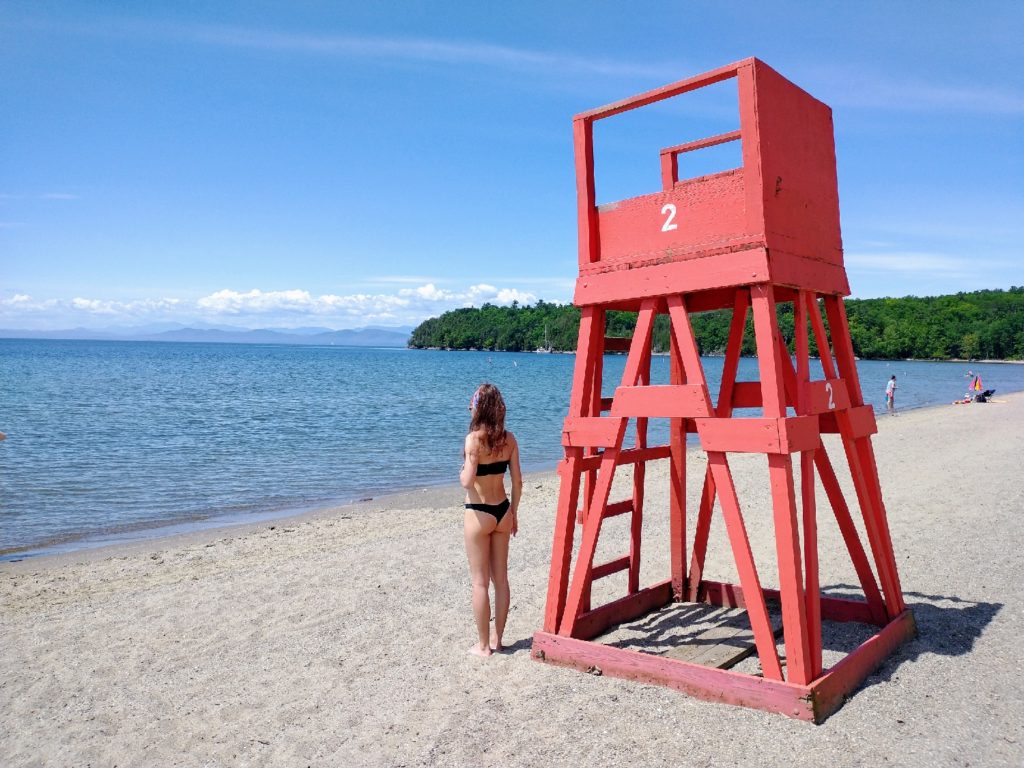
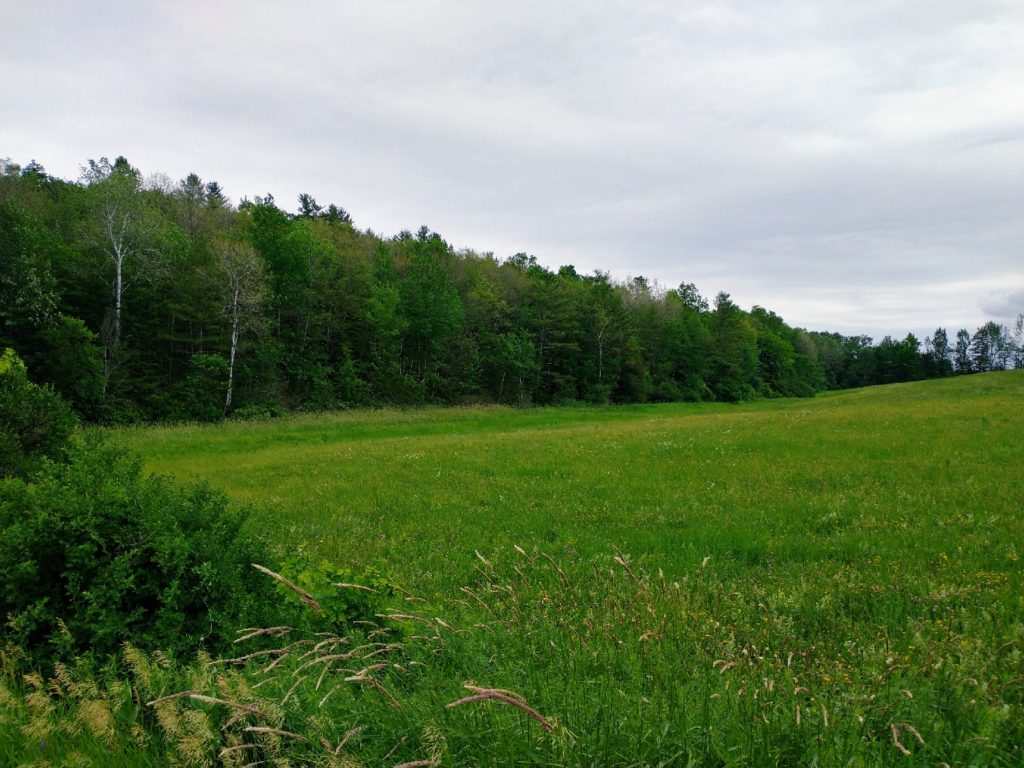
Comments (0)